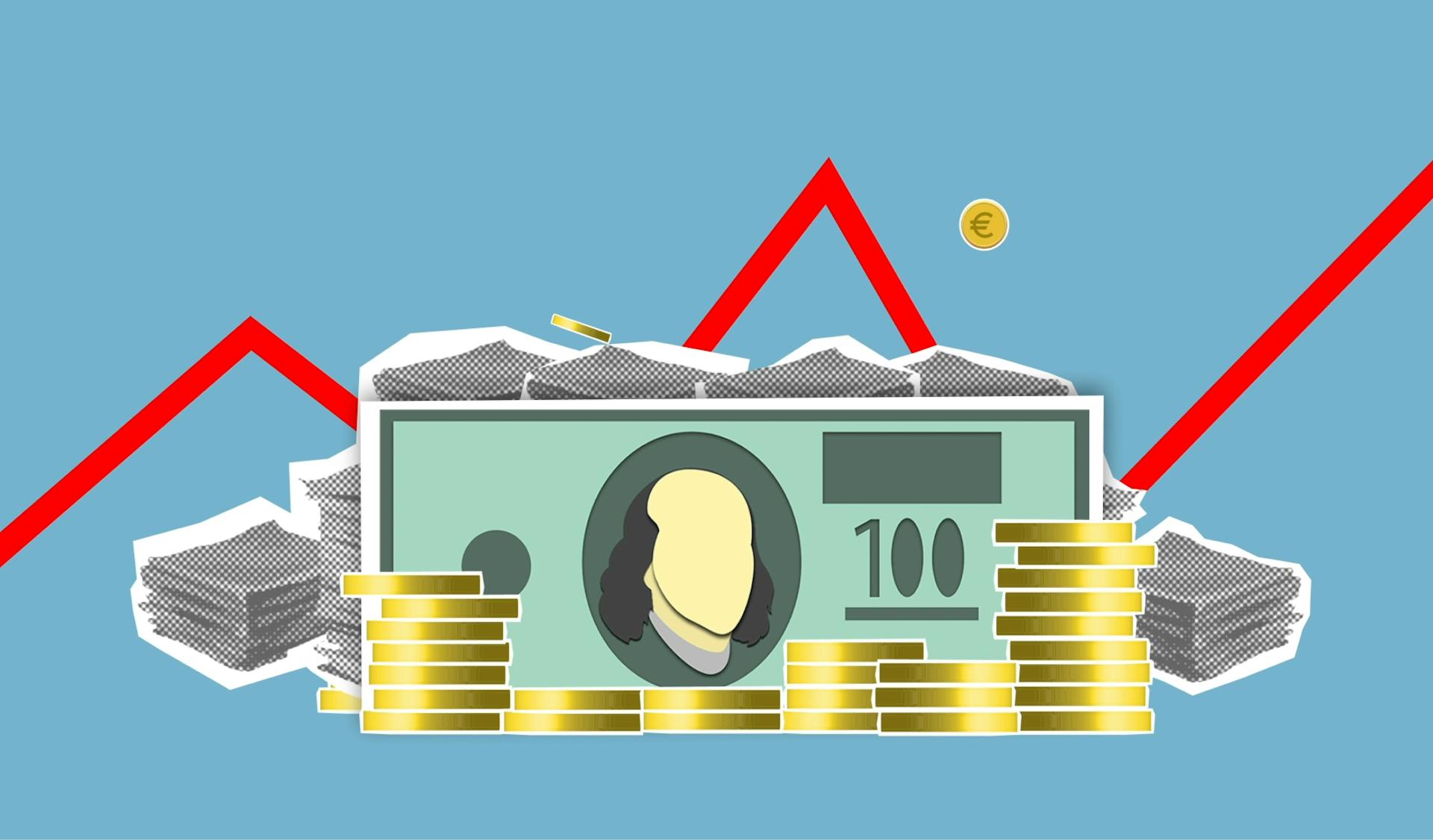
Working capital management is all about keeping your business afloat by managing your cash flow effectively. It's the difference between your current assets and current liabilities, which can be calculated by subtracting your current liabilities from your current assets.
A company's working capital can be positive, negative, or zero, and it's essential to maintain a positive working capital to ensure business continuity. This can be achieved by optimizing accounts receivable and accounts payable.
A well-managed working capital can help a business avoid cash flow problems, reduce the risk of insolvency, and make informed financial decisions.
A unique perspective: How Can a Company Improve Its Current Ratio
What is Working Capital Management?
Working capital management involves making informed decisions to improve each factor that impacts working capital. Effective working capital management requires trend analysis and tracking of ratios and metrics.
Computing and tracking ratios and metrics is a crucial part of working capital management. This helps identify areas for improvement and measure progress over time.
Related reading: What Are Working Capital Ratios
Assessing accounts receivable and accounts payable aging reports is also essential for effective working capital management. This provides insight into a company's ability to collect payments from customers and pay its own bills.
Inventory management is another critical component of working capital management. Companies with slow inventory turnover may require higher working capital due to longer production cycles.
Cash management is vital for working capital management, as it affects a company's ability to pay its debts and invest in growth. Companies that can quickly generate short-term funds, such as big retail companies, may need lower working capital.
The U.S. Small Business Administration connects improving working capital flows to the cash cycle, which refers to the continuous flow of resources into and out of working capital accounts.
For another approach, see: Corporate Bonds Most Often Pay Interest
Importance of Working Capital Management
Effective working capital management is essential for a company's financial health and success. It ensures that the business has enough cash resources to address its regular needs.
A company's financial health can contribute to its success or failure, and proper liquidity management is significant in achieving this. If a company's assets are tied up in illiquid assets, it may struggle to maintain effective cash flows or pay its short-term debts.
The working capital ratio, also called the current ratio, is a key indicator of a company's liquidity. A higher ratio is desirable, indicating that the company has sufficient liquid assets to pay its obligations.
Working capital management involves managing the components of working capital, including current assets and current liabilities, as a ratio. This ratio expresses the relationship between a company's short-term assets and its short-term liabilities.
Effective working capital management requires careful management of cash flows, including invoicing and collecting accounts receivable quickly, and paying accounts payable bills on time while taking advantage of early payment discounts. This helps to improve working capital by limiting the loss of inventory, obsolescence, rework, and scrap.
Optimal working capital management and cash flow management are critical for a business's financial health, especially for small businesses where the difference between success and failure can be significant.
Additional reading: Cano Health Investor Relations
Factors Affecting Working Capital Needs
Working capital needs can vary significantly from one company to another. A company's size, structure, and strategy are all endogenous factors that can affect its working capital needs.
The size of a company, for instance, can impact its working capital requirements. Larger companies often require more working capital to meet their financial obligations. On the other hand, smaller companies may require less working capital due to their smaller scale of operations.
Exogenous factors, such as the level of interest rates and the type of industry a company operates in, can also impact working capital needs. Companies in industries with high interest rates or seasonal fluctuations may require more working capital to stay afloat.
Here are some key factors that affect working capital needs:
- Company size
- Company structure
- Company strategy
- Access to banking services
- Interest rates
- Type of industry
- Competitor strategy
- Macro-economic conditions
Factors Affecting Needs
Working capital needs can vary significantly from one company to another. The size of a company is a key factor in determining its working capital needs.
A company's structure can also impact its working capital needs. This includes the type of industry and products or services sold.
The access and availability of banking services can also affect working capital needs. This can be a challenge for companies operating in remote or underdeveloped areas.
Interest rates can also play a role in determining working capital needs. Companies may need to adjust their cash flow management strategies in response to changes in interest rates.
The level of competition from other companies can also impact working capital needs. Companies operating in highly competitive markets may need to invest more in working capital to stay ahead.
Macroeconomic conditions can also affect working capital needs. This can include factors like inflation, economic growth, and unemployment rates.
You might enjoy: Permanent Interest Bearing Shares
Types of
Types of working capital are crucial in determining a business's liquidity and ability to meet its financial obligations.
Net working capital is the most basic type, measured as current assets minus current liabilities. This indicates a company's liquidity to meet its current financial obligations.
Gross working capital refers to highly liquid assets that can readily be converted to cash. This is essential for businesses that need to respond quickly to changing market conditions.
Here's an interesting read: What Is Financial Liquidity
Fixed working capital is the minimum cash and current assets required to cover current liabilities. This is often referred to as permanent working capital, as it's the foundation upon which other types of working capital are built.
Temporary working capital is the difference between net working capital and fixed working capital. This type of working capital is needed to cover unexpected expenses or fluctuations in business activity.
Some businesses may require additional working capital due to seasonal fluctuations in demand. This is known as seasonal working capital. Others may need reserve margin working capital to cover unusual circumstances.
Here are the main types of working capital:
- Net working capital
- Gross working capital
- Fixed working capital
- Temporary working capital
- Seasonal working capital
- Special working capital
- Regular working capital
- Reserve margin working capital
Working Capital Management Metrics
Working capital management metrics are essential tools for businesses to assess their liquidity and efficiency in managing their resources. The working capital ratio is a measure of liquidity that compares total current assets to total current liabilities.
A company's working capital ratio can be improved by reducing its cash conversion cycle (CCC). The CCC is calculated by adding days inventory outstanding (DIO) and days sales outstanding (DSO) and then subtracting days payables outstanding (DPO).
On a similar theme: Outstanding Common Stock Refers to the Total Number of Shares
Here are some key working capital management metrics to track:
- Working capital ratio: a measure of liquidity calculated by dividing total current assets by total current liabilities
- Days Payables Outstanding (DPO): the average number of days that the company takes to pay its suppliers
- Days Inventory Outstanding (DIO): the average number of days that the company takes to sell its inventory
- Cash Conversion Cycle (CCC): the average time taken for the company to convert its investment in inventory into cash
By monitoring these metrics, businesses can identify areas for improvement and optimize their working capital management to achieve better financial health and success.
Other Metrics
Working capital management is a crucial aspect of any business, and there are several metrics that can help you measure its effectiveness.
The working capital ratio is a measure of liquidity that calculates total current assets divided by total current liabilities.
Days Payables Outstanding (DPO) is the average number of days a company takes to pay its suppliers.
Companies can reduce their DPO by extending payment terms to suppliers.
Days Inventory Outstanding (DIO) is the average number of days a company takes to sell its inventory.
Reducing DIO can help companies convert cash into inventory and then back to cash more quickly.
The Cash Conversion Cycle (CCC) is calculated by adding DIO and Days Sales Outstanding (DSO) and then subtracting DPO.
Readers also liked: Total Asset Turnover Is Computed as Net /average Total Assets.
Here are the formulas for calculating DPO, DIO, and CCC:
A shorter CCC is generally better, as it indicates that a company is converting cash into inventory and then back to cash more quickly.
Components
Working capital management can be broken down into several key components. These components are crucial to a company's financial health and stability.
A company's balance sheet contains all working capital components. Working capital consists of current assets and current liabilities.
Current assets include cash, accounts receivable, inventory, and other assets that can be easily converted into cash within a year. A service company that doesn't carry inventory will simply not factor inventory into its working capital calculation.
Current liabilities include accounts payable, short-term loans, and other debts that must be paid within a year.
On a similar theme: Accounts Receivable Cash Flow Statement
Accounts Receivable Turnover
The accounts receivable turnover ratio is a key metric in working capital management, and it's calculated by dividing annual net credit sales by the average accounts receivable balance. This ratio tells you how efficiently your company is collecting payments from customers.
A high accounts receivable turnover ratio indicates that your company is doing a great job of getting paid by customers in a timely manner. For example, in one company, the accounts receivable turnover ratio was 7.8 times per year, which means they collected accounts receivable an average of 7.8 times in a year.
To calculate the accounts receivable turnover ratio, you'll need to know your company's annual net credit sales and average accounts receivable balance. For instance, in one example, the annual net credit sales were $36,000,000 and the average accounts receivable balance was $4,600,000, resulting in an accounts receivable turnover ratio of 7.8 times per year.
A lower accounts receivable turnover ratio can indicate that your company is struggling to collect payments from customers, which can lead to cash flow problems. It's essential to track and analyze this ratio regularly to identify areas for improvement and optimize your working capital management.
By understanding and managing your accounts receivable turnover ratio, you can improve your company's cash flow and working capital efficiency, and make more informed decisions to drive business success.
If this caught your attention, see: Brk.b Shares Outstanding
Manage Liquidity
Managing liquidity is a crucial aspect of working capital management. Properly managing liquidity ensures that a company has enough cash resources to address its regular business needs.
A company's liquidity affects its creditworthiness, which can contribute to its success or failure. The lower a company's liquidity, the more likely it is to face financial distress.
Proper liquidity management is manifested at an appropriate level of cash and/or the ability of an organization to quickly and efficiently generate cash resources to finance its business needs. This can be achieved by maintaining a balance between cash reserves and investments in low- or non-earning assets.
If a company finds it difficult to receive cash from its debtors, it may suffer from cash flow problems. The collection ratio is often used to calculate the average time it takes for a company to receive payment after a credit sale is made.
Here are some key components of liquidity management:
- Cash and cash equivalents: All of the company's money on hand, including foreign investments and low-risk, short-term investments like money market accounts.
- Accounts receivable: Claims to cash for items sold on credit, net of any allowance for doubtful payments.
- Notes receivable: Claims to cash from other agreements, usually documented with a signed agreement.
By managing these components effectively, a company can ensure that it has sufficient liquidity to meet its financial obligations and achieve its business goals.
Sources
- https://corporatefinanceinstitute.com/resources/accounting/working-capital-management/
- https://taulia.com/glossary/what-is-working-capital-management/
- https://softco.com/glossary/working-capital-management/
- https://tipalti.com/resources/learn/working-capital-management/
- https://www.investopedia.com/terms/w/workingcapital.asp
Featured Images: pexels.com


